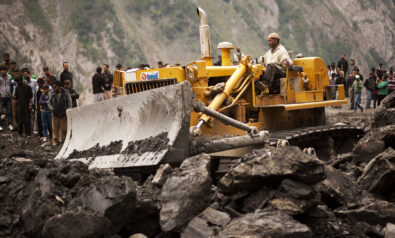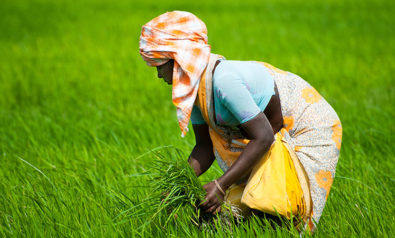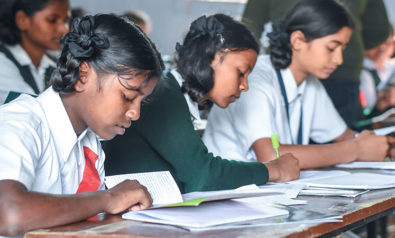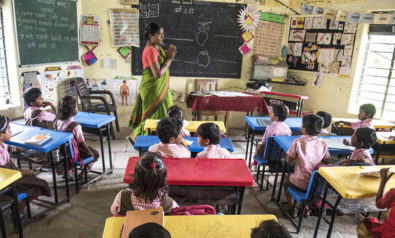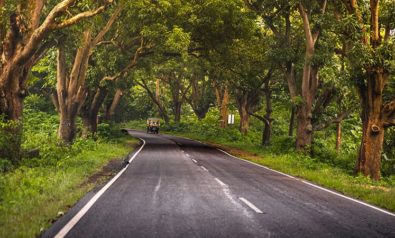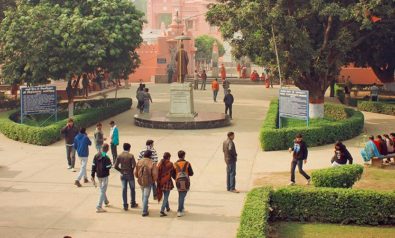While sipping a hot cup of tea and browsing the latest news on my cellphone on the morning of July 20, the headline “Himachal to be fruit bowl soon, Rs 100-cr project planned” caught my attention. To put this in an international context, this project amounts to approximately $13.6 million. When I read the article, I learned that the state government of Himachal Pradesh in India was set to launch the HP Shiva Pilot Project to promote fruit production in new areas. The government chose four districts for the project: Bilaspur, Mandi, Kangra and Hamirpur.
As a proud Himachali, I am indeed thrilled. My Himalayan state has already carved a niche for quality apple production in India. Today, Himachal Pradesh contributes 40% of total apple production in the country. It has come to be known as the “apple state” of India.
360° Context: The State of the Indian Republic
Yet it is important to remember that apple cultivation is confined mainly to the three districts of Kinnaur, Kullu and Shimla. Smaller pockets in districts such as Mandi, Chamba, Sirmaur and Lahaul-Spiti also produce apples. These high hills provide ideal climatic conditions for apple crops with the requisite chilling season in the winter. Apples are not native to Himachal Pradesh. Just as the Englishman Sir Henry Nicholas Ridley introduced rubber to Southeast Asia, the American Samuel Evans Stokes pioneered apple orchards in the state.
The story of apples in India did not quite begin with Stokes. For centuries, Kashmiris had grown apples. Even in Himachal Pradesh, the British had introduced varieties such as the red-flushed Pippin, a crisp cooking apple, but these varieties turned out to be too sour for Indian tastes. It is Stokes who earns credit for apple cultivation, though. He introduced the sweeter-tasting “red delicious” from Missouri that proved a hit with the Indian palate. Later, he introduced the similarly successful “golden delicious.”
The new project aims to take a leaf out of Stokes’ book and will introduce fruits like orange, litchi, pomegranate and guava in areas where fruit is not produced currently. In the past, the horticulture department has done a good job of popularizing fruit production in the state. It is quite likely that this new project might succeed and make Himachal Pradesh the fruit bowl of India.
The news report not only described the new project but also other initiatives by the Himachal Pradesh state government. These include the provision of insecticides at subsidized rates to protect horticultural crops. This is a dream for commercial farmers and a nightmare for environmentalists. Himachal Pradesh might become the fruit bowl of India, but is the intensive use of insecticides a price worth paying?
A Story of Apple Production
An examination of horticulture in Himachal Pradesh might provide some answers to this question. My native district of Kinnaur is renowned for high-quality apple orchards. Kinnaur apples are prized for their natural color and lusciousness. Such is their reputation that apple sellers in other parts of India start passing off apples from other districts of Himachal Pradesh as Kinnaur apples.
Apples from other districts of Himachal Pradesh ripen by July. Kinnaur apples ripen later because they are grown at a higher altitude. They only start ripening by the second week of September. Apples of Gangyul Valley, also known as Ropa Valley, ripen even later. They come from a cluster of six villages in the trans-Himalayan region of Himachal Pradesh, comprising Shiaso, Sunnam, Taling, Rushkalang, Giabong and Ropa. Gangyul apples sometimes take as long as November to ripen, traditionally hitting the finest fruit markets of the country around the great Indian festival of Diwali.
The memory of an incident from my student days still brings a smile to my face. Back then, I was in Chandigarh, popularly known as “City Beautiful,” which acts as a gateway to Himachal Pradesh. A thelewala, a hawker who sells from a cart, was selling apples. This elderly gentleman proudly informed me that the apples on his cart were from “Chinor,” which I presumed to refer to my native district of Kinnaur.
I played along and teasingly asked him about Chinor. The gentleman was clueless about the exact location of the place but told me it was a distant faraway place, high in the mountains. His words, “Chinor mein desh ka sabse badhiya seb hota hai” (Chinor produces the best apples in the country) still echo in my ears. My heart swelled with pride when he said so even though his apples were not from Kinnaur. I know because this incident occurred in August, a month when Kinnaur apples are yet to arrive in the market.
A little bit of context is essential for the reader. I was born in one of the trans-Himalayan villages of Gangyul Valley. I come from a family of farmers. During the 1980s and early 1990s, I never heard of anyone using industrial fertilizers or pesticides. Most farmers could not even afford them. Only in the late 1990s did chemical sprays on apple trees kick off. They began during the flowering season and continued until harvest. These sprays were prescribed by well-meaning professionals in the horticulture department.
Yet there is little evidence that chemical sprays were actually needed in Kinnaur at that time. Experts advised farmers who took their advice on board. The goal for both was increased output. There might have been an organic way to do so, but all parties were looking for quick results. This was the most convenient shortcut to a bigger harvest and more money. The results have not been entirely salubrious for Gangyul Valley and Kinnaur district.
Fruit Production and Pollution
The culture of convenience has not only led to increased insecticide usage, but also pollution in the form of empty bottles, cans, containers, packets of various kinds and plastics. Each time I see such trash, I am reminded of Rachel Carson’s classic on adverse environmental effects of insecticide pollution, “Silent Spring.” I shudder with dread at the thought of the looming consequences of all kinds of environmental pollution in Himachal Pradesh.
Even in Gangyul Valley, the use of insecticides is increasing. The famously pristine Himalayan spring water here is not so pristine anymore. As a result of pollution, the health of both cattle and humans could decline. As in other parts of the planet, biodiversity might suffer. In the future, the environmental uniqueness of this trans-Himalayan region could also come under threat.
I have been sharing my concerns with farmers in my region. In Rushkalang, I spoke to Dukhan Negi, a farmer who grows apples. While he does not read or write English, his knowledge of apple varieties, crop timings, various pests, harvesting techniques and more are most impressive.
Although Negi shared some of my concerns, he told me how farmers were prisoners of a new grim reality. Midway through our conversation, he remarked, “Come to my orchard, I will show you how the insects are destroying my apples.” Indeed, there were some insects and insect marks on the apples. He explained that these caused much loss. The market expects apples that look perfect. Apples with insect marks fetch a significantly lower price.
I spoke to another progressive apple grower from the village named O.P. Negi. He has been practicing organic apple cultivation because he is concerned about the environmental hazards from insecticide sprays. Yet he too was concerned that farmers had few alternatives to insecticides. Unless market tastes change, biopesticides might be the only way forward. The ray of hope for him was that Gangyul Valley still produces the best quality apples in Kinnaur. As a health culture develops in India and the government provides increasing horticulture support, our ancestral home could emerge as the source for organically produced high-quality apples.
As I conclude this article, I cannot help but think about apple farming in my region. Undoubtedly, apples have transformed the society and economy of the indigenous people of the remote and rugged mountainous district of Kinnaur. Yet they have exacted a heavy price as well. Apart from the looming threat of environmental pollution, people have become more materialistic, a sense of community feeling has declined and the culture has become more short-sighted.
So, the new project that aims to boost fruit production must ensure that the environment is kept in mind. Himachal Pradesh needs organic methods of farming, biopesticides and large-scale removal of trash littering its mountain slopes. Earning more money today by supplying national or global markets while polluting the air, water and soil would be killing the goose that lays golden eggs. For Himachal Pradesh, and indeed for India itself, the need of the hour is sustainable, environment-friendly fruit production.
The views expressed in this article are the author’s own and do not necessarily reflect Fair Observer’s editorial policy.
Support Fair Observer
We rely on your support for our independence, diversity and quality.
For more than 10 years, Fair Observer has been free, fair and independent. No billionaire owns us, no advertisers control us. We are a reader-supported nonprofit. Unlike many other publications, we keep our content free for readers regardless of where they live or whether they can afford to pay. We have no paywalls and no ads.
In the post-truth era of fake news, echo chambers and filter bubbles, we publish a plurality of perspectives from around the world. Anyone can publish with us, but everyone goes through a rigorous editorial process. So, you get fact-checked, well-reasoned content instead of noise.
We publish 2,500+ voices from 90+ countries. We also conduct education and training programs
on subjects ranging from digital media and journalism to writing and critical thinking. This
doesn’t come cheap. Servers, editors, trainers and web developers cost
money.
Please consider supporting us on a regular basis as a recurring donor or a
sustaining member.
Will you support FO’s journalism?
We rely on your support for our independence, diversity and quality.



